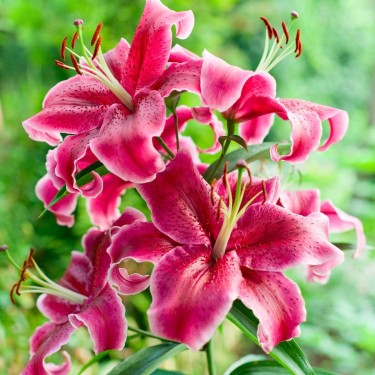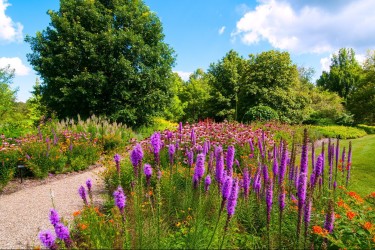Do you see too much green out the window and desire a more vibrant landscape? These colorful perennials will boost your color quota in a heartbeat!
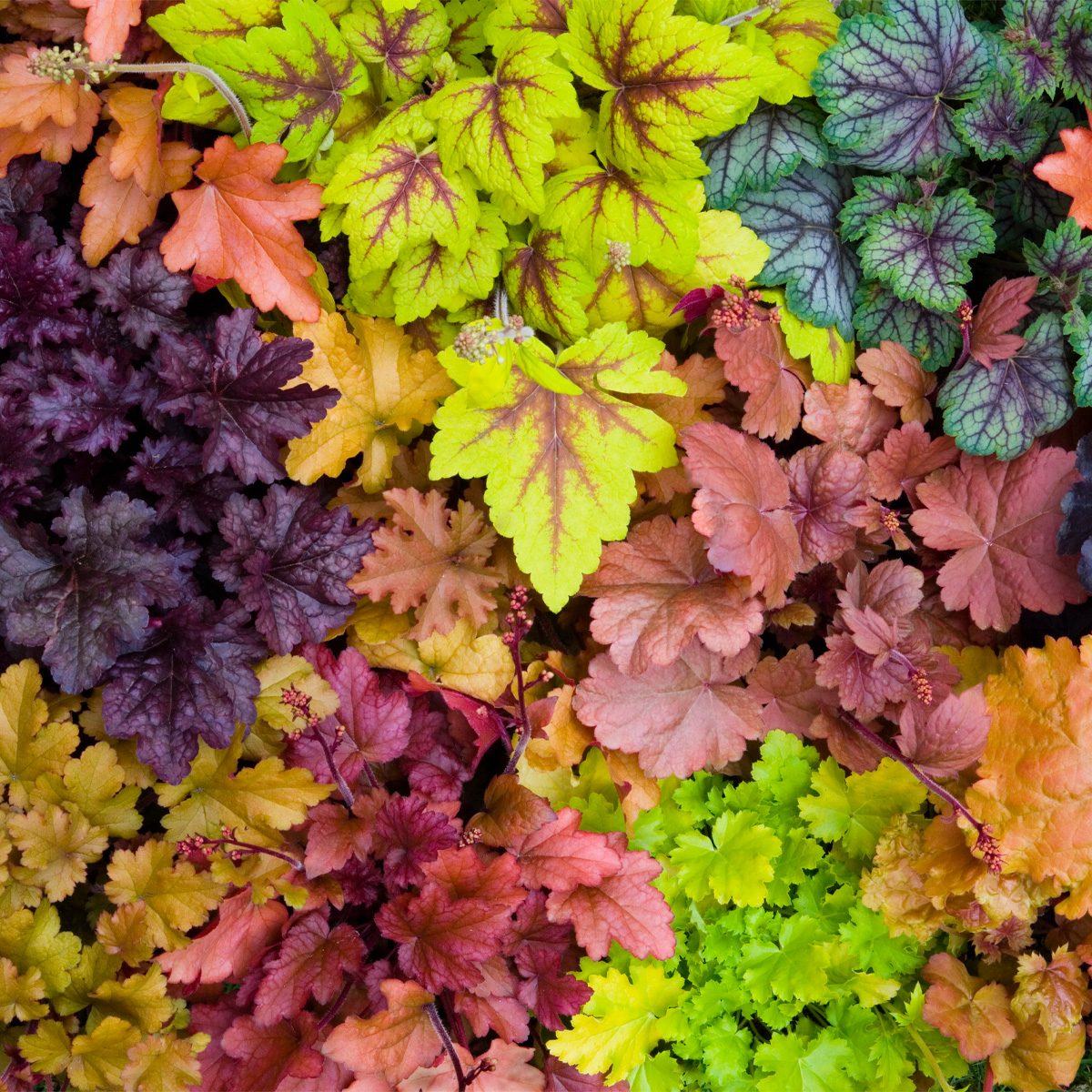
Heuchera and Heucherella
You might like growing coleus in your garden because of the incredibly diverse color palette it offers, but it has one major drawback — you need to replant it every year because it isn’t cold hardy.
To get a similar look with hardy, colorful perennials, try Heuchera and Heucherella. These two can survive winters as cold as minus-30 F, or as far north as USDA Plant Hardiness Zone 4, so you’ll only need to plant them once. Plus, they tolerate the heat as far south as USDA Zone 9.
These fantastic foliage perennials come in shades of gold, bronze, red, burgundy, purple and green. Some even have patterned foliage. There’s one to complement just about every other color in your landscape and combination containers in sun and shade.
Unless you live in a warm climate where it doesn’t freeze, plan on these plants losing most of their leaves during the winter and sprouting fresh in the spring.
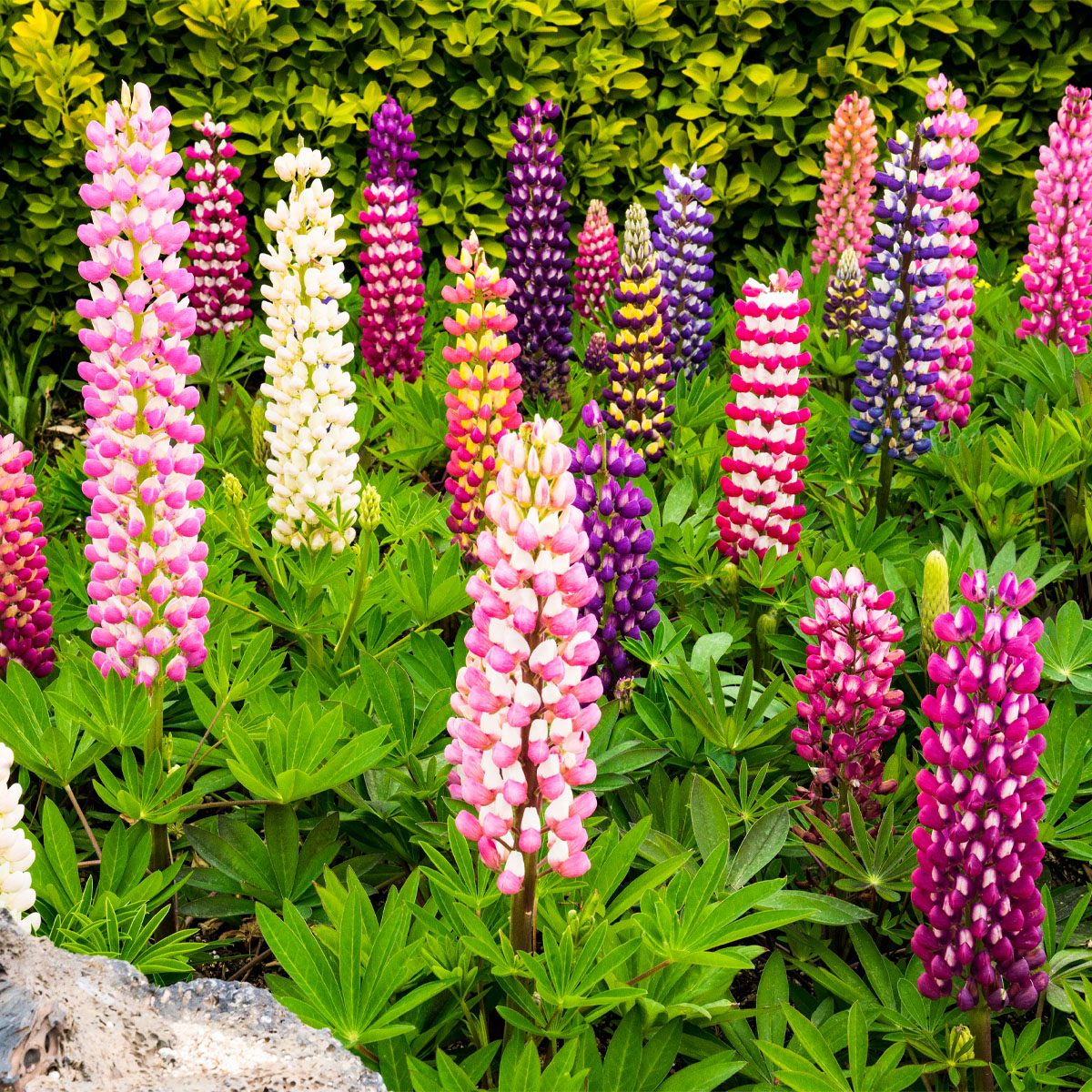
Lupine
Breathtaking is the only way to describe a grouping of lupines in full bloom in late spring through early summer. Look for Manhattan Lights varieties which bear enormous flower spikes in colors never before seen in lupines. Surprisingly, they won’t need staking due to their extra-strong stems.
Lupines aren’t long-lived colorful perennials, but they’re worth replanting every few years to see a color show like none other. They thrive in climates where days are warm and sunny and nights are cool, like in the northern half of the U.S. In warmer areas where temperatures don’t subside significantly after sundown, they’re more often used as summer container garden accents. Lupines are winter hardy in Zones 4 to 9.
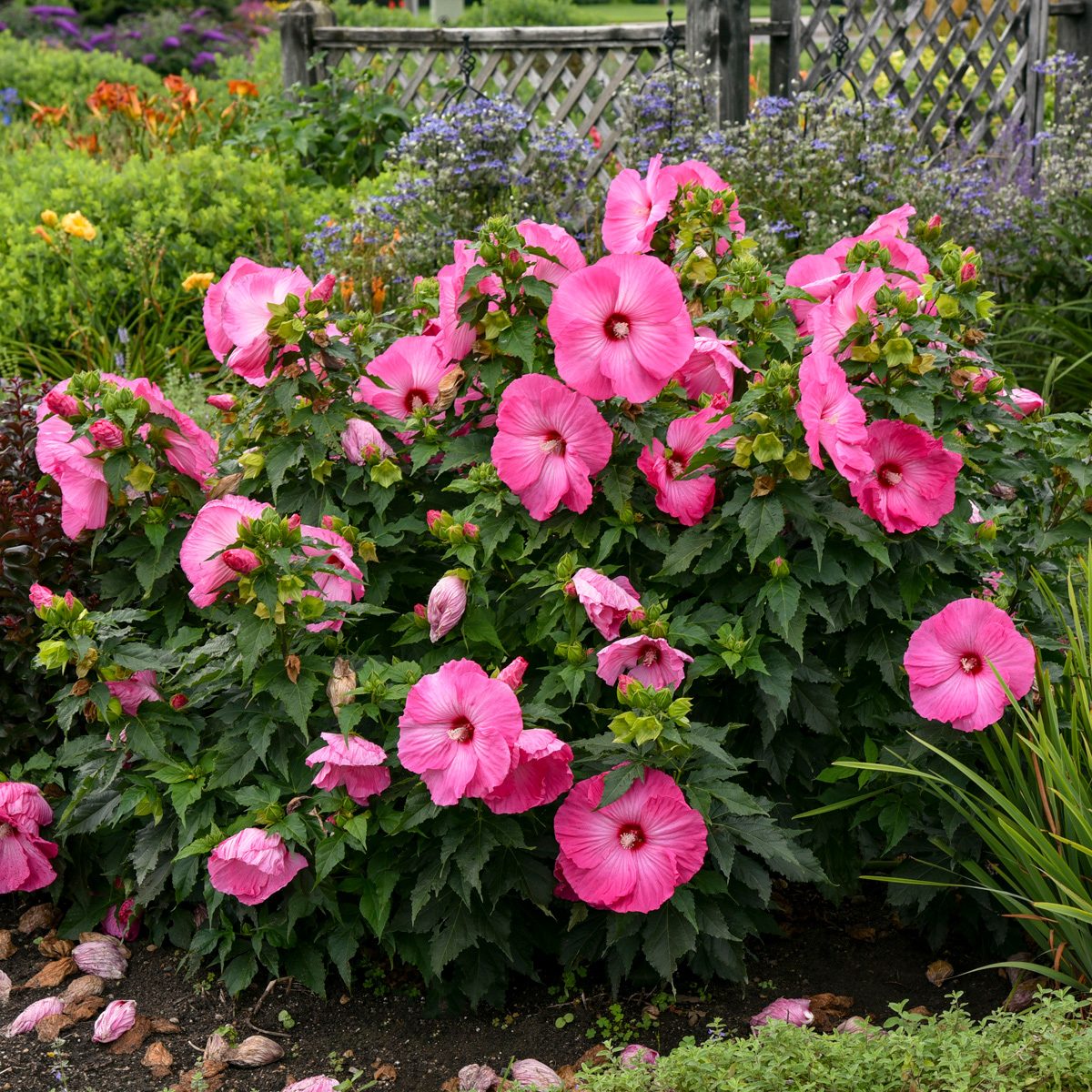
Rose Mallow
Here’s a colorful perennial that was born to shine. It’s guaranteed to be the flashiest plant in your garden every year from midsummer into the fall when it shows off its huge dinner plate-size flowers.
Look for the vivid pink ‘Airbrush Effect’ variety (pictured here), along with those that bear scarlet red, magenta or white patterned flowers at local garden centers beginning in early summer. Although it certainly looks like a tropical plant, rose mallow is surprisingly cold hardy, down to Zone 4. It also thrives in climates with warm, humid summers through Zone 9.
Abundant sunshine and moisture are the keys to getting it to thrive in your landscape. Expect rose mallow to bloom for several months beginning in mid- to late-summer in cooler climates. If you live in the South, you’ll see flowers much earlier, and they should last through most of the summer.
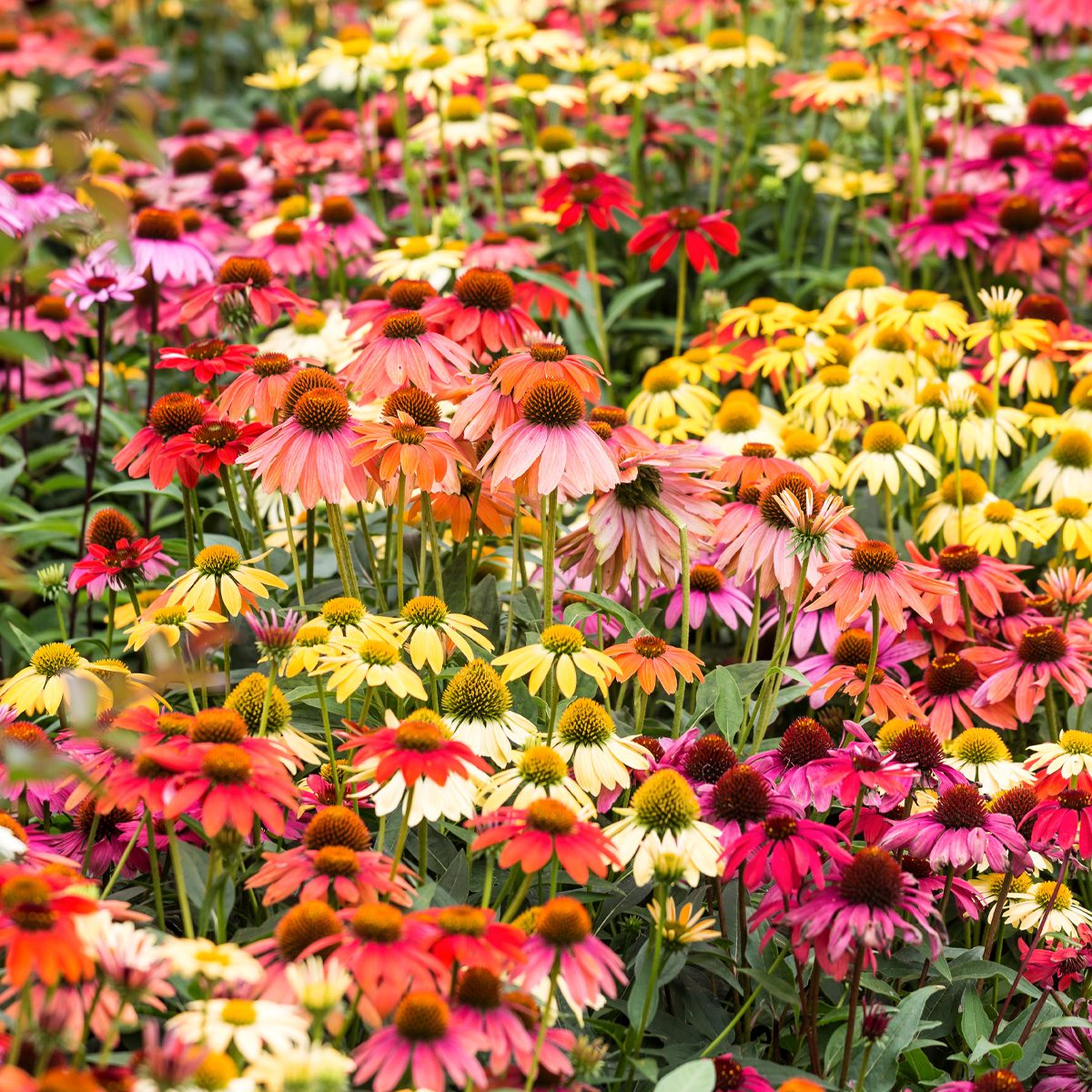
Echinacea
Gone are the days when coneflowers only came in pink and white. Today at your local nursery you’ll find a huge selection in brilliant shades of red, orange, magenta, gold, bicolor tones, and even some with green flowers. These long-blooming perennials add a festive glow to the garden for most of the summer and make colorful fresh bouquets that last more than a week in a vase.
Gardeners in Zones 4 through 9 can successfully grow coneflowers in the landscape. The key is to plant them in well-drained soil that never stays soggy, especially in the winter, because that can quickly lead to rot. You’ll see more blooms if you plant them in a sunny spot, but a half-day of sun will work too.
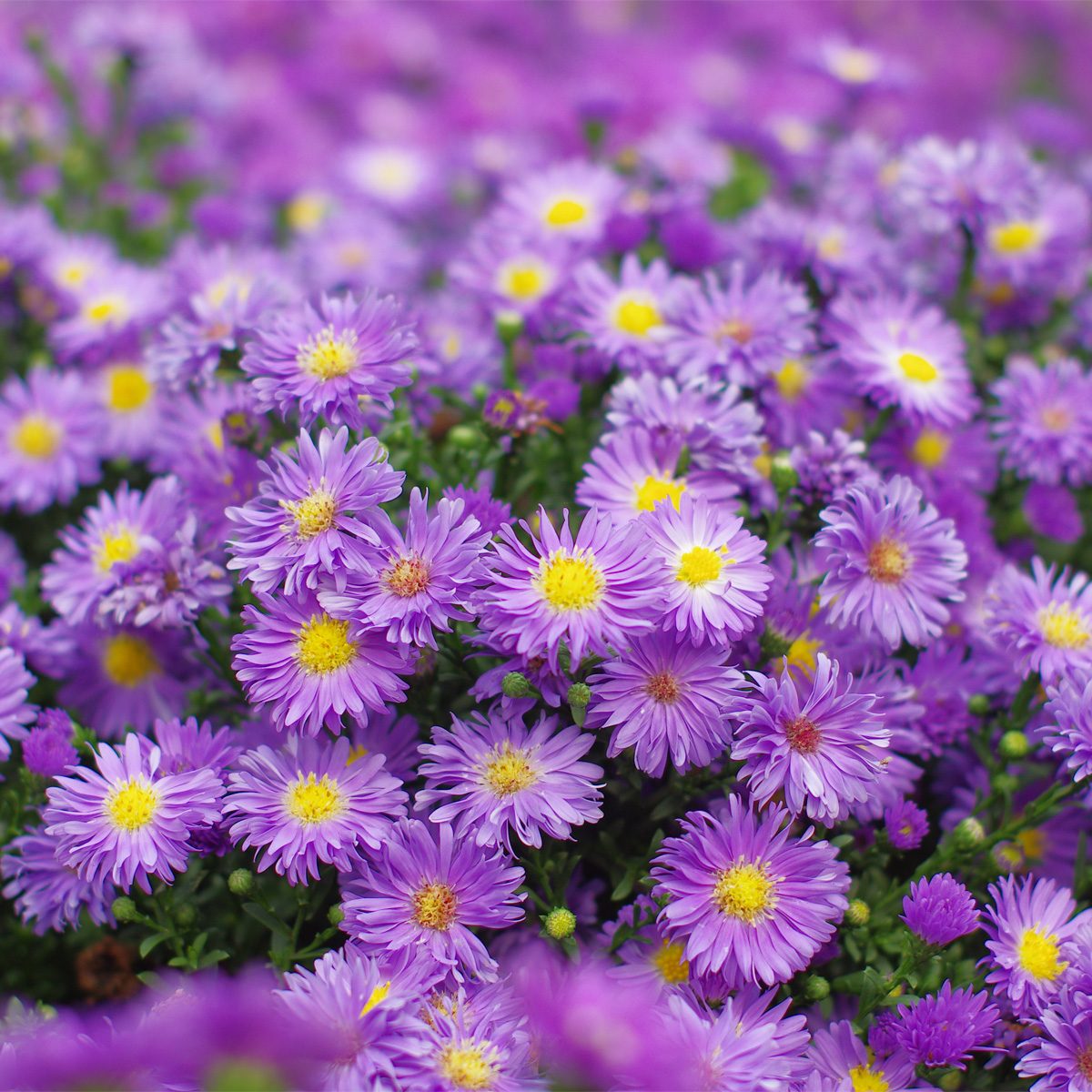
Aster
Fall-blooming garden mums are one of the most widely sold plants in autumn. But if you are looking for something similar that is more reliably perennial, choose asters. They form similar tight mounds completely covered in bright purple or pink flowers, so they can be used like garden mums for fall decorating, in seasonal containers or as a garden accent. They make long-lasting cut flowers, too.
Winter hardiness as cold as Zone 3 (-40 F) is a major bonus for this durable, colorful perennial, but it will also take the heat as far south as Zone 8. Look for disease-resistant cultivars that make longer-lived plants, like ‘Purple Dome’ or ‘October Skies.’ Growing asters in full sun will also deter powdery mildew from forming.
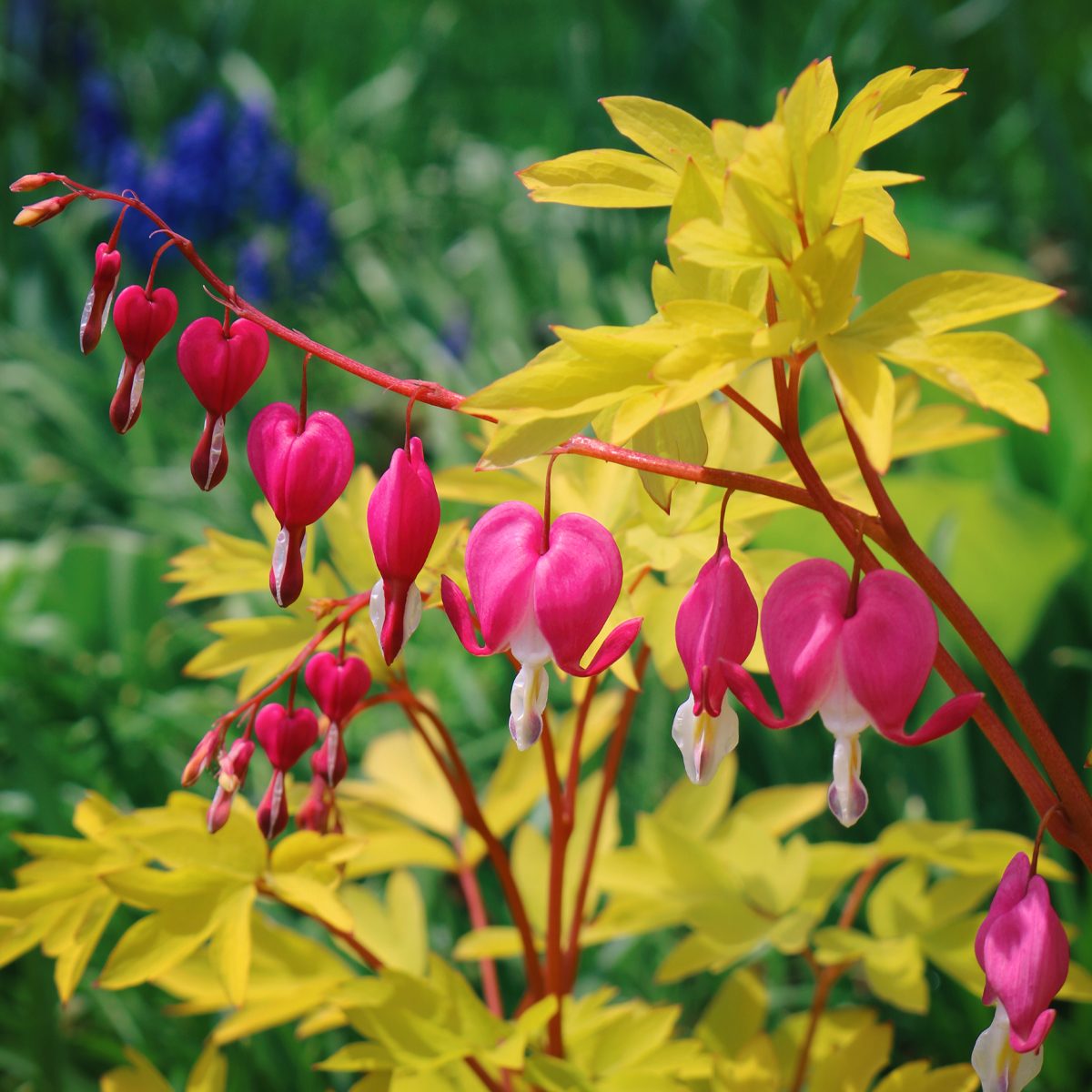
‘Gold Heart’ Bleeding Heart
‘Gold Heart’ bleeding heart is like your cheery friend who wakes up every morning raring to go. From the moment this colorful perennial peeks out of the ground in the spring, it exudes brilliant colors that scream for attention.
Glowing gold foliage is topped with red, arching stems that carry dangling chains of hot pink and white, puffy heart-shaped flowers for several weeks in spring. It is one of the first plants to welcome bumblebees back into the garden.
If you crave color in your landscape, you need this perennial! Once you grow it, you’ll find yourself looking for places to plant even more. It embodies the very essence of the hope spring brings. Grow ‘Gold Heart’ bleeding heart in a spot with moist soil in part shade to full shade in Zones 3 through 9 for best results.
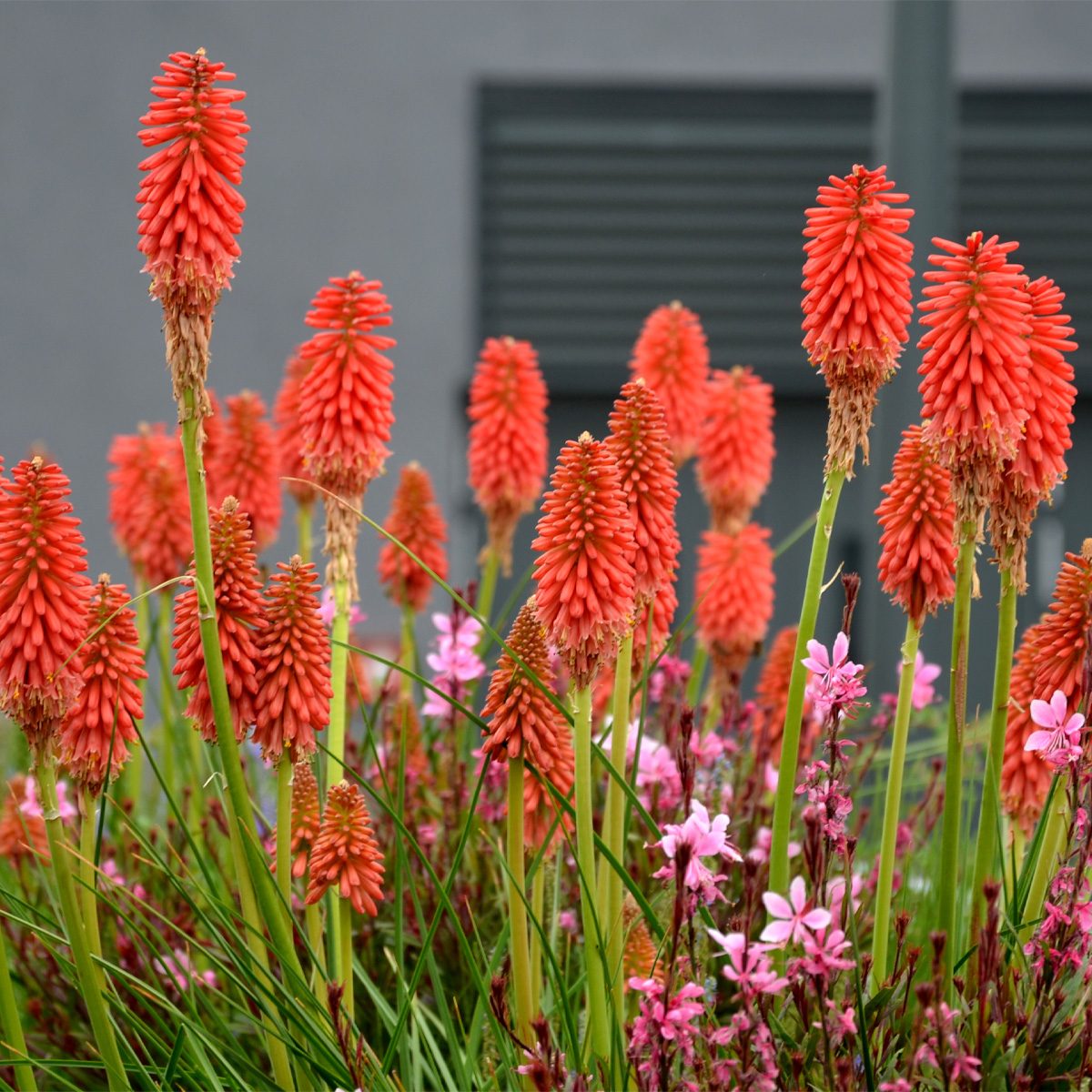
Red Hot Poker
You might mistake this colorful perennial for ornamental grass at first, at least until you see its torch-shaped flowers rise up beginning in early summer. Once the buds open, you’ll know exactly how it got its common name — red hot poker.
Varieties like ‘Redhot Popsicle’ bear solid red flower spikes, as pictured here, but many bicolor, orange and yellow varieties are available, too. They vary mostly in their height as well as their ability to rebloom. The Pyromania series includes especially good rebloomers which add a blast of color to the landscape for most of the summer.
Kniphofia is native to southern and tropical parts of Africa where it thrives in hot, humid weather. In North America, it’s grown mostly in Zones 6 through 9, in full sun. Well-drained soil is a must because heavy, wet soil can quickly make this plant rot. Once established, it’s drought tolerant.
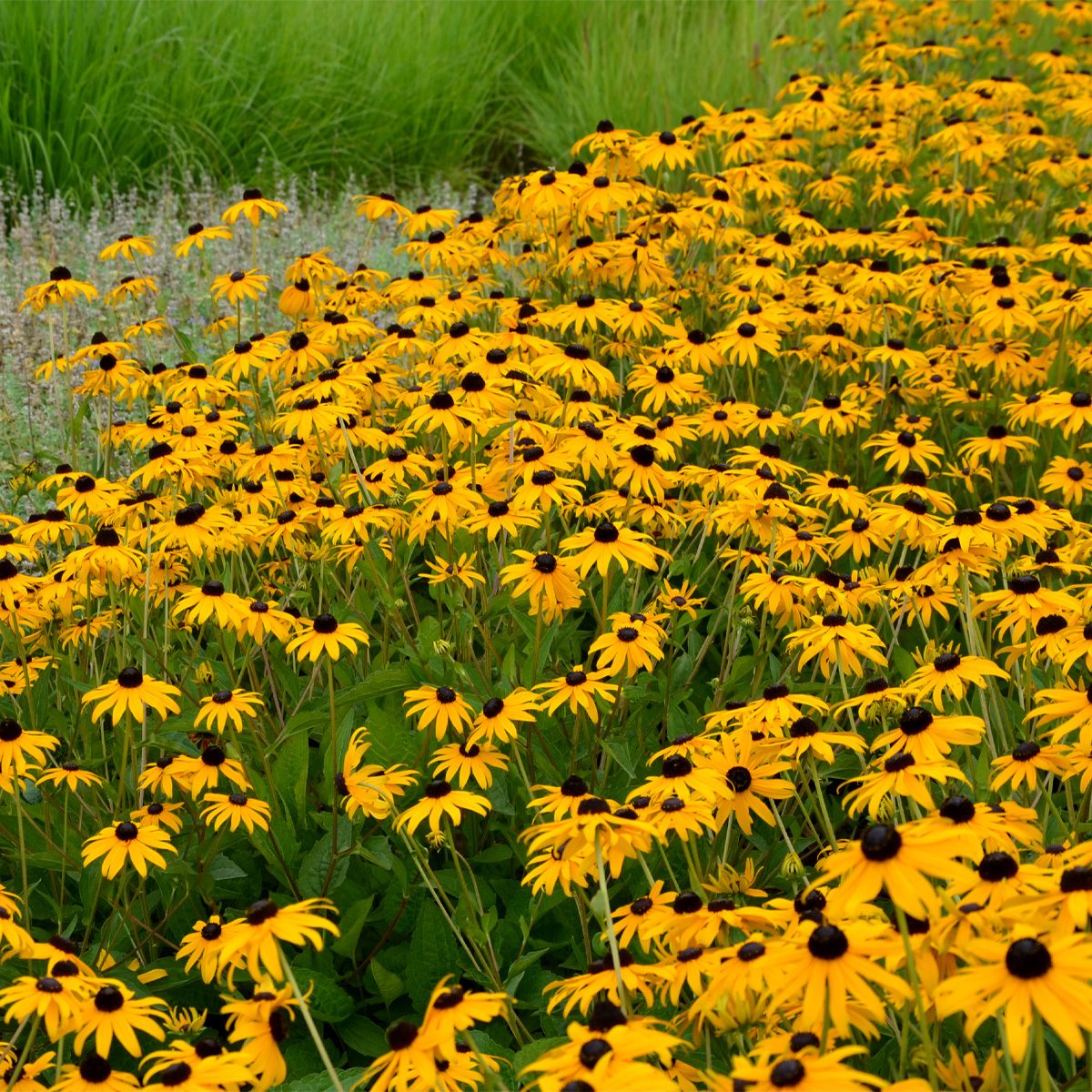
Black-Eyed Susans
This garden classic lights up garden beds with its signature gold blossoms from Minnesota to Texas every year from midsummer into early fall. It’s so popular because it brings an enormous dose of festive color to the landscape with such little effort by the gardener. Another advantage: Deer and rabbits tend to pass it up, but you’ll often spot butterflies feeding on the flowers.
Look for disease-resistant varieties with healthy foliage all season, like ‘American Gold Rush’ and ‘Little Goldstar.’ Growing these plants in full sun with good airflow will also help to prevent foliar diseases. Average soil and moisture are all they need to thrive year after year in Zones 4 through 9.
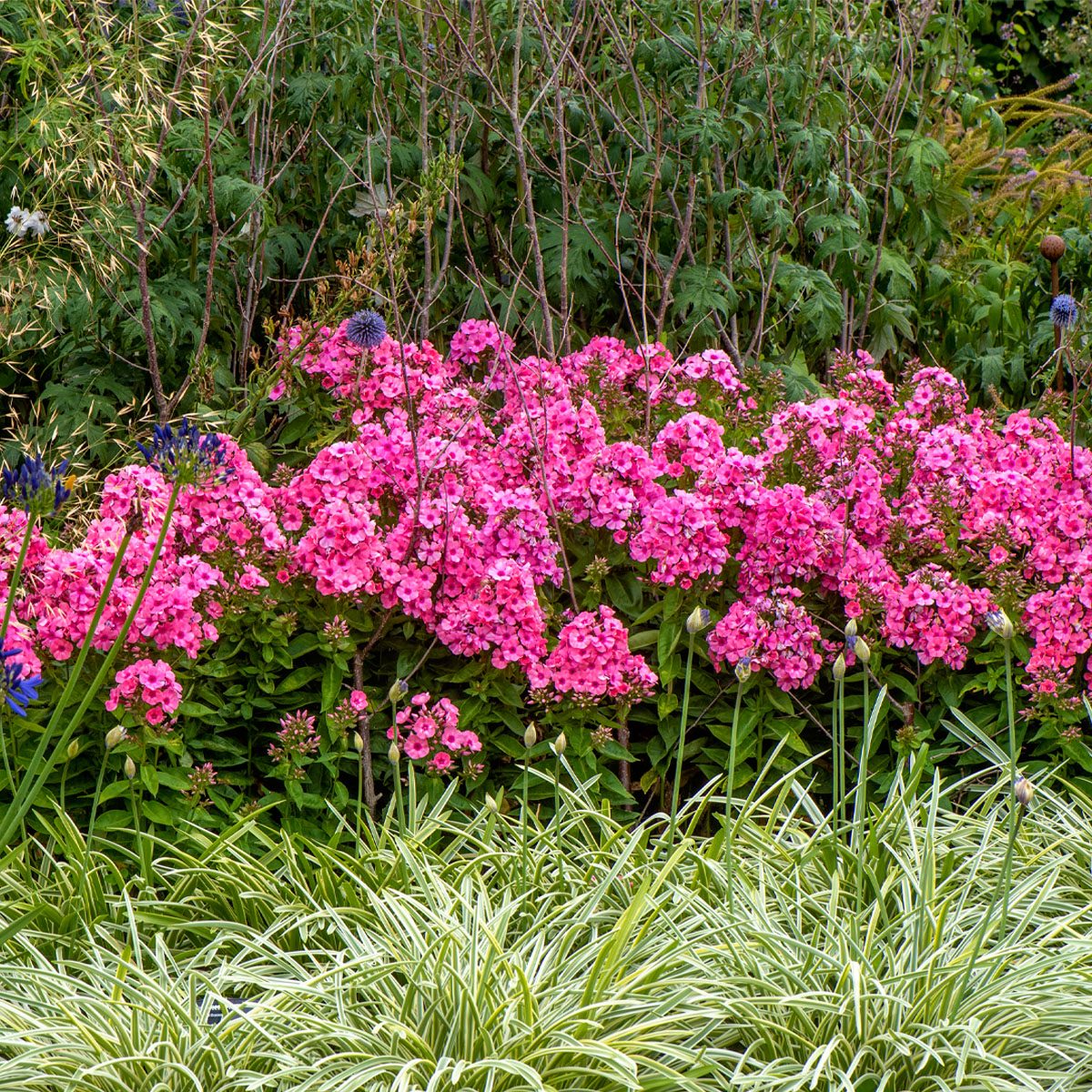
Tall Garden Phlox
Planting phlox is an easy way to bring masses of brilliant blooms to your landscape all season long, whether you choose the spring-blooming groundcover type or the upright summer bloomers you see pictured here.
Tall garden phlox (Phlox paniculata) produces large, showy clusters of sweetly fragrant flowers in vibrant shades of pink, purple, red and white for much of the summer. Butterflies and bees adore them in the garden, but you might also like to clip a few to enjoy in a fresh bouquet indoors.
This colorful perennial tends to look best when planted in groupings of three to five of one color. If you’re starting a new garden bed, pick up several plants to start. After a few years, they’ll have grown large enough to divide so you can move them to more places around your garden. In Zones 3 through 8, plant hardy tall garden phlox in a spot with full sun to part shade and good airflow to prevent powdery mildew from settling in.
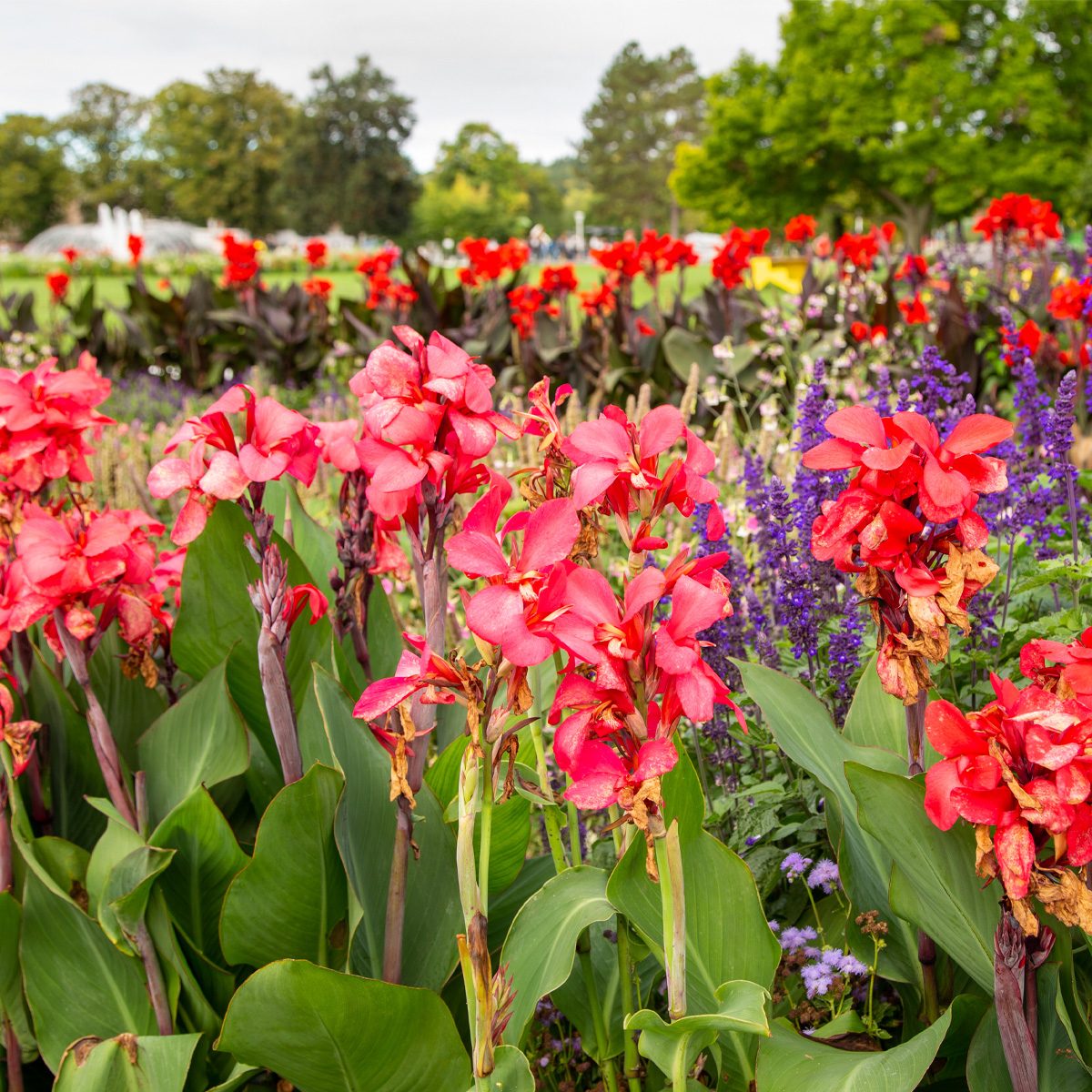
Canna Lilies
Canna lilies are the perfect plants for people who love the tropical look but prefer something they don’t have to buy new every year. These bold foliage plants with brilliant flower spikes make fabulous focal points in sunny to lightly shaded garden beds. You can also try them as a centerpiece planted in the middle of an extra-large patio pot.
Dwarf varieties like the Cannova series tend to work better in containers, so they don’t get too top-heavy and topple over in the wind. But full-sized eight-foot tall canna lilies are absolutely spectacular in the landscape.
These beauties bloom in warm shades of coral, deep orange, scarlet, light pink and clear yellow. Seek out cultivars with dramatic deep purple or striped foliage for an extra boost of color. Many are winter hardy in Zones 7 through 10.
In colder climates, their rhizomes can be lifted after the first frost and stored in a cool place that doesn’t dip below 40 F for the winter. Wait until the soil warms up in late spring before replanting outdoors.

